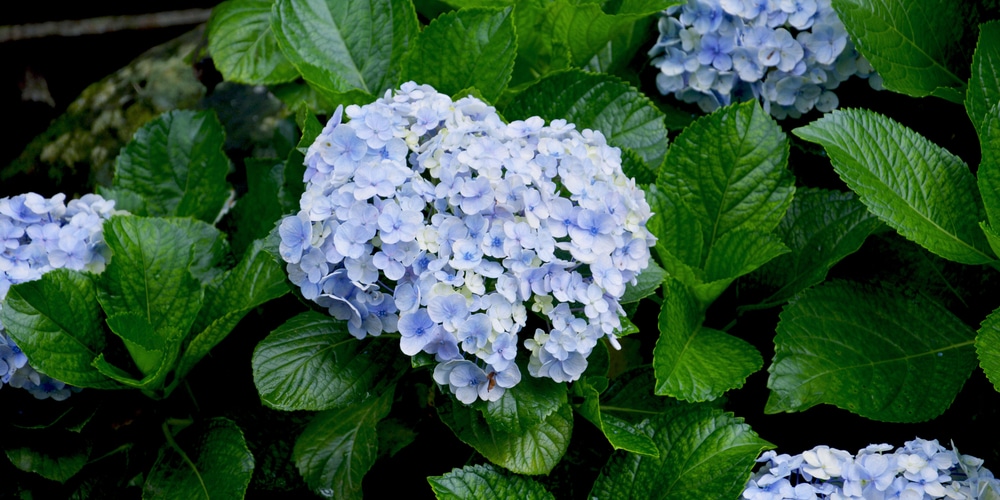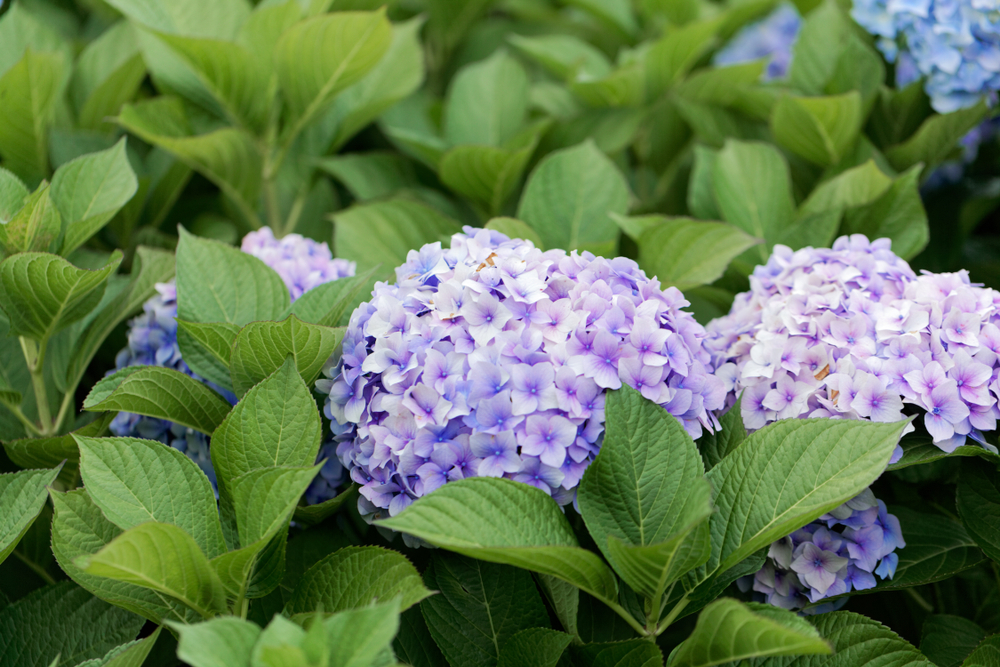If you’re like most people, you probably think of zebras as exotic animals that live in the wild. You may not know that they also make excellent garden plants! It’s no wonder that the Zebra hydrangea is a popular choice for gardens and floral arrangements. With its large, showy flowers and glossy green leaves, this shrub is sure to add a touch of elegance to any setting.
| Botanical Name |
Hydrangea Macrophylla’ Zebra |
| Common Name | Zebra Hydrangea, Bigleaf Hydrangea, French Hydrangea |
| Plant Type | Perennial |
| Flower Color | White |
| Size When Mature | 36-50 inches |
| Bloom Time | Summer |
| Sun Requirements | Partial to Full Sun |
| USDA Hardiness Zones | 5 – 9 |
| Soil PH Range | 5.0-8.0 |
| Soil Type | Neutral, Acidic, Alkaline, Well-Draining |
| Water Needs | Low-Medium |
| Native Area | Asia |
What You Need to Know About Zebra Hydrangea
Zebra Hydrangea, also known as Bigleaf Hydrangea and French Hydrangea, is a deciduous shrub that is native to Asia. It grows to be about 36 to 50 inches tall, with a spreading habit.
The leaves are ovate-shaped and dark green in color, with serrated margins. They turn red or purple in fall. During the season of Summer, the plant has flowers that are small and delicate, usually white or pale pink in color.
The plant is easy to grow and low maintenance, making it a good choice for beginner gardeners. However, if you have pets or children, you should be aware that the plant is poisonous if ingested.
How to Care for Zebra Hydrangea
Here’s everything you need to know about growing and caring for a thriving Zebra Hydrangea
Light
The Zebra Hydrangea does best in partial shade, but it can also tolerate full sun as long as it is given plenty of water. This shrub should be watered deeply and regularly during its first growing season to help it establish a robust root system. Once established, the zebra hydrangea is relatively drought tolerant.
Water and Soil Needs
Watering is the most important aspect of Zebra Hydrangea care. You’ll also want to make sure to water them regularly, especially during hot weather. Put down about an inch of water per week, and be sure to increase the amount if you notice the leaves wilting or drooping. Be sure to avoid overwatering, as to avoid root rot.
As for soil, Zebra Hydrangeas prefer well-drained, fertile soil. If your soil is heavy or clay-like, consider mixing in some compost or sand to improve drainage. Having soil with a pH range of 5.0-8.0 is ideal.
Temperature Requirements
The plant is pretty resilient when it comes to temperature. You can grow hydrangeas in USDA zones 5-9 and thrives in temperatures between -20°F and 30°F. Any lower than -20°F and the plant may die. Be sure to protect your Zebra Hydrangea from harsh winds, as this tears away the leaves.
Fertilizer
The best fertilizer to use on a Zebra Hydrangea is one with high Nitrogen and Phosphorus content. This will encourage the plant to produce more flowers and greener leaves.
Apply fertilizer in early Spring and mid-Summer. Fertilizing regularly will help keep your zebra hydrangea healthy and looking its best. Be sure not to over-fertilize, as this can damage the roots and leaves.
Common Diseases
Zebra hydrangeas are relatively disease-resistant but can be susceptible to powdery mildew, leaf spot, and root rot.
Powdery mildew appears as a white, powdery coating on the leaves and can be controlled with a fungicide. Leaf spot is characterized by small, dark spots on the leaves and can be treated with a copper-based fungicide. Root rot is caused by too much moisture and can be prevented by planting in well-drained soil.
Zebra hydrangeas are also susceptible to damage from deer, rabbits, and other animals. To prevent this, you can surround the plant with a fence or cage.
Zebra Hydrangea Propagation
Propagating Zebra Hydrangea is easy, first, you will need to take a stem cutting from an existing plant. It is best to do this in the Spring or early summer when the plant is actively growing. Choose a healthy stem around 6 inches long and cut it just below a leaf stem. Remove the lower leaves from the stem, leaving the top part with a few leaves.
Cover the cut end of the stem in rooting hormone and then put it in a pot with moistened potting mix. Cover the plant with plastic wrap to create a mini-greenhouse and putting it in a bright, warm location is best. Water the soil regularly, and in 6-8 weeks, new growth should emerge from the soil. You can then remove the plastic and continue caring for your new zebra hydrangea plant.


